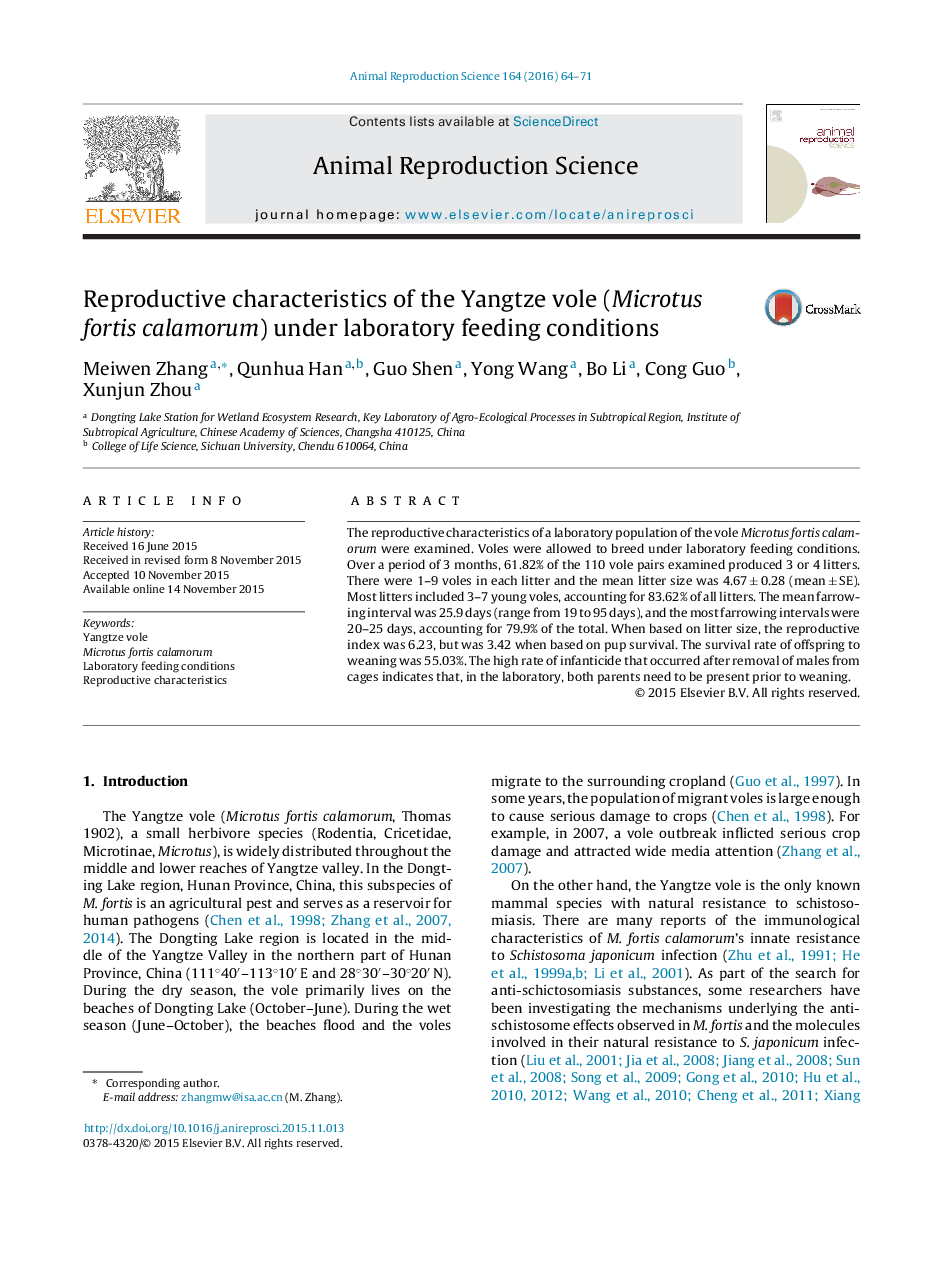| Article ID | Journal | Published Year | Pages | File Type |
|---|---|---|---|---|
| 2072565 | Animal Reproduction Science | 2016 | 8 Pages |
Abstract
The reproductive characteristics of a laboratory population of the vole Microtus fortis calamorum were examined. Voles were allowed to breed under laboratory feeding conditions. Over a period of 3 months, 61.82% of the 110 vole pairs examined produced 3 or 4 litters. There were 1-9 voles in each litter and the mean litter size was 4.67 ± 0.28 (mean ± SE). Most litters included 3-7 young voles, accounting for 83.62% of all litters. The mean farrowing interval was 25.9 days (range from 19 to 95 days), and the most farrowing intervals were 20-25 days, accounting for 79.9% of the total. When based on litter size, the reproductive index was 6.23, but was 3.42 when based on pup survival. The survival rate of offspring to weaning was 55.03%. The high rate of infanticide that occurred after removal of males from cages indicates that, in the laboratory, both parents need to be present prior to weaning.
Related Topics
Life Sciences
Agricultural and Biological Sciences
Animal Science and Zoology
Authors
Meiwen Zhang, Qunhua Han, Guo Shen, Yong Wang, Bo Li, Cong Guo, Xunjun Zhou,
